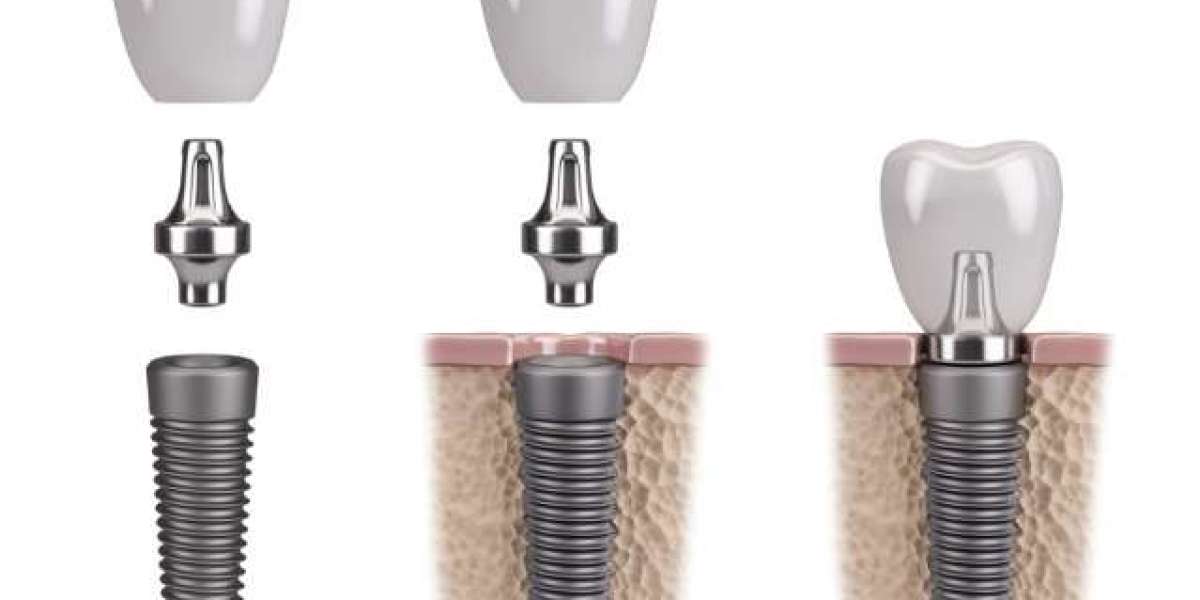If you're considering dental implants, you're probably wondering: What is the recovery like after surgery? That’s a smart question—because while the procedure itself is usually straightforward, the dental implant recovery timeline plays a huge role in the success of your new smile.
In this guide, we’ll walk you through what really happens after dental implant surgery—from the first 24 hours to full healing over several months.
Whether you’ve already booked the procedure or are just exploring your options, this post will help you prepare and feel more confident.
At a Glance: Dental Implant Recovery Timeline
Here’s a quick breakdown of what to expect after surgery:
Day 1–3: Swelling, mild bleeding, and discomfort are common. Ice packs and rest are your best friends.
Week 1: Most pain and swelling subside. You’ll start eating soft foods and return to gentle daily activities.
Weeks 2–6: The gums begin to heal around the implant. You’ll be back to work and brushing normally (with care).
Weeks 6–12: The jawbone fuses with the implant in a process called osseointegration.
3–6 Months: Final crown is placed once the implant is fully integrated. You’re done!
Want a deeper look at what happens during each phase? Keep reading!
Immediately After Surgery: The First 24–72 Hours
The first few days after surgery are crucial for minimizing complications and helping your body start the healing process.
Common symptoms during this phase include:
Swelling around the jaw and cheeks
Light bleeding near the implant site
Bruising or soreness
Difficulty chewing or speaking clearly
Tips to manage discomfort:
Apply ice packs (20 minutes on, 20 minutes off) for the first 24–48 hours
Stick to cold or lukewarm soft foods like smoothies, mashed potatoes, or yogurt
Avoid smoking, alcohol, and strenuous activity
Take prescribed or over-the-counter pain relief as advised by your dentist
Pro Tip: Don’t poke or touch the implant site with your tongue or fingers—this can irritate the area and slow healing.
Week 1: Settling In
By the end of the first week, most people feel significantly better. Swelling and soreness should have decreased, and any stitches (if used) may start to dissolve or be removed by your dentist.
What you should be able to do now:
Resume light physical activity
Eat more varied soft foods (scrambled eggs, fish, pasta)
Brush your teeth gently, avoiding the implant site
Did You Know? Many patients report that dental implant surgery is less painful than a tooth extraction. Recovery discomfort is usually mild and manageable.
Weeks 2–6: Gum Healing and Early Bone Fusion
At this stage, the gum tissue continues to heal and wrap around the base of the implant post. You’ll likely have a check-up around this time to ensure everything’s progressing well.
What’s happening inside your mouth?
The implant begins bonding with your jawbone
The gum tissue adapts to the shape of the implant abutment
You may receive a temporary crown if visible teeth are affected
What you should do:
Keep brushing twice daily with a soft-bristle toothbrush
Use a non-alcoholic mouth rinse (if recommended)
Maintain your soft diet if advised, but slowly reintroduce firmer foods
Avoid clenching, grinding, or putting pressure on the implant
Weeks 6–12: Osseointegration in Progress
This is the most critical biological stage of the dental implant recovery timeline. During osseointegration, your jawbone grows around the implant, anchoring it securely in place.
This process is invisible but vital—if it doesn’t happen properly, the implant may fail.
How to support this process:
Avoid chewing hard foods (nuts, ice, crusty bread) on the implant side
Stay consistent with oral hygiene
Keep all dental check-ups and let your dentist know if anything feels “off”
Expert Insight: “Patients who follow post-surgical instructions closely tend to heal faster and with fewer complications. Staying consistent is key.” – Dr. A. Lopez, restorative dentist
3–6 Months: Final Crown Placement and Full Recovery
Once osseointegration is complete, you’ll return to your dentist to have the permanent crown or bridge fitted. This is the final step—and the part everyone looks forward to.
By this point, you should:
Feel no pain or discomfort
Be eating normally
Have full confidence in your bite
Be able to smile without hesitation
The final crown:
Will be color-matched to your existing teeth
Can be cemented or screwed onto the implant abutment
Should look, feel, and function like a natural tooth
Quick Guide: A Realistic Look at Recovery Concerns
The Situation:
Many patients feel anxious after surgery, unsure if what they’re experiencing is “normal.”
Common Concerns:
“Is this swelling supposed to last this long?”
“I can’t eat anything crunchy—is that bad?”
“When can I brush near the implant?”
Practical Tips:
1. Monitor but don’t panic: Mild swelling and discomfort for up to 7 days is completely normal. Call your dentist only if it worsens or you have a fever.
2. Stick to soft foods longer than you think you need to: Even if you feel fine, your implant is still healing under the surface.
3. Don’t skip check-ups: Early intervention helps catch problems like minor infections or loose abutments before they get serious.
4. Stay smoke-free (if possible): Smoking significantly increases the risk of implant failure—especially in the early healing phase.
Why It Works:
Patients who ask questions, follow recovery protocols, and return for reviews tend to experience the highest success rates with dental implants.
Need guidance during recovery? Reach out to your dental clinic for reassurance or advice—they’ve seen it all before.
FAQs About Dental Implant Recovery
Q: How long does it take to fully recover from dental implants?
A: While swelling and soreness typically resolve in 1–2 weeks, full recovery (including bone fusion) takes 3 to 6 months.
Q: Is pain after dental implant surgery normal?
A: Yes. Most patients experience mild to moderate discomfort for the first 3–5 days. Pain beyond a week or severe throbbing may indicate an issue—always check with your dentist.
Q: Can I go back to work the next day?
A: It depends. Some people return to work after 1–2 days, especially if their job is not physically demanding. It's best to rest for at least 24 hours after surgery.
Q: What foods should I avoid during recovery?
A: Avoid hard, crunchy, spicy, or sticky foods. Stick with soft options like soups, pasta, scrambled eggs, and smoothies during the early recovery phase.
Q: What are the signs of implant failure?
A: Persistent pain, swelling after two weeks, a loose-feeling implant, or pus/discharge from the site are red flags. Contact your dentist immediately.
Conclusion: Be Patient—Healing Is a Process, Not a Race
Dental implants offer a reliable, long-term solution to missing teeth—but only if you give them time to heal properly.
From the initial swelling to the final crown, the dental implant recovery timeline is a journey that requires patience, care, and good habits.
By understanding each stage and taking the right steps, you can boost your chances of success and enjoy the full benefits of your implant for years to come.
Thinking about dental implants or already in recovery? Stay informed, stay patient, and don’t hesitate to ask your dentist for support along the way.







